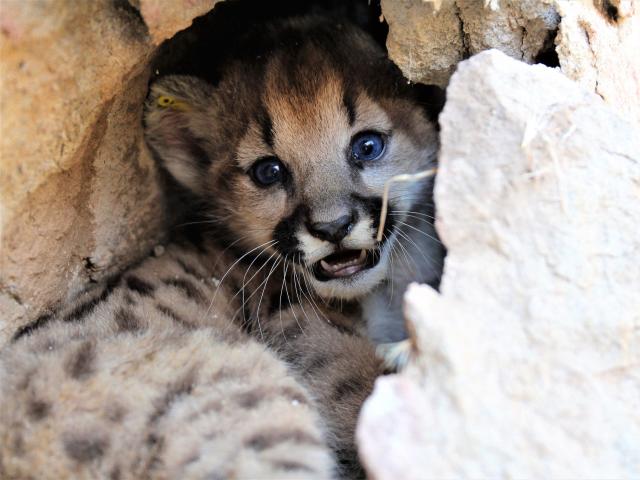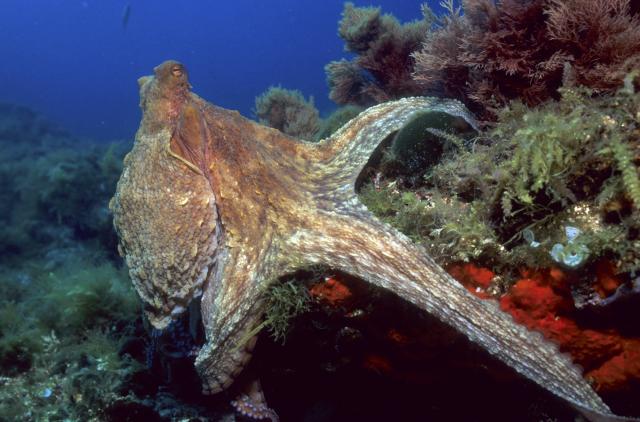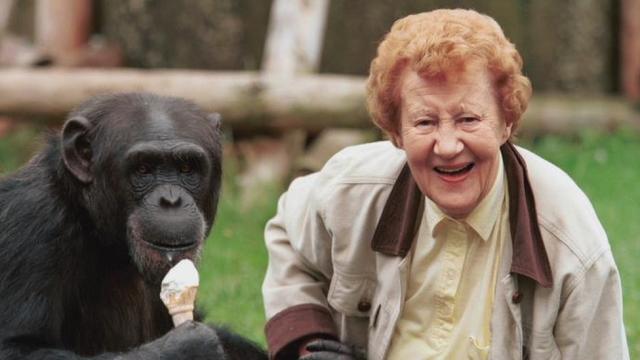Science Daily News | 29 May 2023

Views (127)

Horrific World War II bunker where Japanese scientists experimented on prisoners with biological weapons, found by archaeologists, report says
Japanese scientists exposed prisoners in occupied China to pathogens and dissected them to learn about the effects on the human body.

Archaeologists found a bunker used by WWII Japanese scientists to conduct human experiments, says a report.
They say the site could provide new evidence about war crimes committed by the notorious Unit 731.
The Japanese scientists captured by the US were granted immunity in exchange for their research findings.
The facility near the city of Anda, China, is believed to have been used by Unit 731 of the Japanese Imperial Army, which conducted brutal experiments on humans between 1935 and 1945.
The notorious unit experimented on and killed thousands of people, including men, women, and children.
The research published in the journal Northern Cultural Relics in May could provide new evidence about war crimes.
"It also highlights the ongoing legacy of Unit 731's atrocities and their impact on global efforts to prevent biological warfare," the Heilongjiang Provincial Institute of Cultural Relics and Archaeology researchers said.
Archaeologists discovered the underground facility consisting of several interconnected tunnels and chambers after starting an investigation in 2019 using geophysical prospecting, drilling, and excavation techniques.
The researchers are yet to enter the bunkers, but the survey has revealed details about the underground structures, South China Morning Post reported.
A U-shaped cluster of bunkers was discovered five feet below the surface, as well as a circular room that archaeologists believe was used to observe and dissect human subjects after they were infected with pathogens or chemical agents.
Researchers said that their knowledge of the underground facility is still preliminary, and more work will need to be done to learn how the structures relate to each other.
Most of the surface-level buildings at the Anda site were destroyed in 1945 to erase evidence of the experiments, but the underground structures remain, archaeologists said.
Facilities were built below the ground to maintain secrecy, and these included barracks, bathhouses, and dining areas, according to the report.
Some Unit 731 researchers were arrested by Soviet forces and tried at the December 1949 Khabarovsk war crime trials, while those captured by the United States were granted immunity in exchange for their research findings.
Scientists were delighted to discover that parrots willingly made video calls to bird friends and were less lonely as a result
Scientists taught parrots to call other birds and were delighted when the parrots started making the calls on their own and chose which birds to call.

Researchers trained parrots to call certain birds. Later the parrots chose who they wanted to call.
The researchers were delighted when the parrots interacted with each other over the screen.
Scientists had to extensively train bird parents for this exercise. Not just anyone should try it.
Researchers have discovered that parrots are pretty much just like us when it comes to video chatting with friends.
The researchers also told Insider that they were delighted when the parrots on either end of the call interacted with each other by tapping the screen and doing activities together like preening. A sign the birds were bonding.
The study's results are important for the many pet parrots who live alone with their humans and thus may not get their high social needs met.
They tend to pair off within a larger flock of parrots and do most things, like feeding, preening, sleeping, traveling, and raising their young within this social group, Kleinberger and Cunha said.
So, when these birds live alone as pets with minimal social interaction, they have little outlet for many of their cognitive abilities.
Under-stimulated parrots may quickly become bored, frustrated, and lonely. In fact, Cunha said, some countries have made it illegal to keep only one parrot, due to their complex social needs.
The ability to make video calls to other parrots, then, may give birds the chance to access the socialization and species identity they have in the wild, Cunha said.
They then had a training phase where parrots learned to select another bird's photo on a tablet to start a call on Facebook Messenger — which the parrots did successfully in just a couple of weeks.
After that, parrots would ring a bell when they wanted to make a call. When their caregiver offered the tablet, they'd touch the picture of the bird they wanted to chat with.
Initially, the birds were given treats for ringing the bell and selecting a bird "friend," but after the training period, they stopped getting treats. The researchers were happily surprised by how quickly the birds picked up the method for calling one another voluntarily.
Researchers were also delighted to see the parrots engaging with the video calls by following the birds on the other side of the screen, both visually and by directly touching the tablet.
Many birds mirrored behaviors they saw their friends do, like foraging, preening, and flying.
"Throughout the study we observed a diversity of social behaviors, from preening together and sleeping together on-screen to vocalizing," Kleinberger said.
"They developed favorite parrots to call, and most parrots would engage with the system for the maximum amount of time," Hirskyj-Douglas said.
Parrots could make two calls a day, with each call lasting no more than five minutes. The researchers set this time limit for safety and ethical reasons and to minimize the time commitment for caregivers.
Kleinberger added that the sheer number of calls made by the parrots — 147 in all — seemed to support their interest and engagement with the bird on the other side of the screen.
All of the parrot caretakers involved said their bird had a positive experience with video calling, the study said.
Some caretakers said their birds reacted to their video friends the same way they'd react to real people or birds. One caretaker said their bird even called "Come back!" when the other bird walked off-screen.
All but one of the caretakers said they believed their parrot got more out of the video chat than simple enjoyment. For instance, one parrot seemed to gain confidence and began flying more. Others seemed calmer in general, the study said.
The researchers extensively trained the parrot caretakers who participated in the study, Cunha said.
Video calling itself has to be conducted in a sensitive, ethical manner, to slowly introduce the technology and make sure there are no fear reactions, Hirskyj-Douglas added.
Parrot caregivers learned, for instance, to recognize signs of stress during the video calls and offer encouragement to help reduce any fear associated with the new experience.
Caregivers would also end the call if their bird seemed uncomfortable or walked away from the calling zone, Hirskyj-Douglas said. That way, the parrots learned they could simply walk away if they didn't want to interact.
Forced socialization isn't in any parrot's best interest. The researchers released three parrots from the study in its early stages, as these birds didn't seem to like the calls at all.
But most of the parrots apparently enjoyed the experience and chose to make plenty of calls to other birds.
The study authors acknowledge the need for additional research, as this study is the first exploring video calling for parrots. That said, they believe video calling could become an important way to help isolated parrots build and maintain important connections with other members of their species — just as it does for people.
Biologists found 3 adorable female mountain lion kittens. Now the trio will have to survive the harsh urban landscape of Los Angeles.
P-113, P-114, and P-115 were discovered by National Park Service biologists examining how habitat loss affects mountain lions in urban areas.

Biologists discovered three mountain lion kittens in a patch of poison oak outside of Los Angeles.
They were only 24 days old when they were found on May 18.
Now, they must survive in an increasingly urbanized area of Southern California.
Biologists with the National Park Service discovered a litter of recently birthed mountain lion kittens in the Simi Hills, west of Los Angeles.
To find the kittens, the biologists had to wait until the mother, P-77, left the site unattended to hunt for food or rest.
Biologists determined that when the kittens were discovered, they were only 24 days old.
"It will be interesting to learn how these kittens will use the landscape once they get older and disperse, particularly if they decide to stay in the Simi Hills or cross freeways to enter larger natural areas." Jeff Sikich, the lead field biologist of the NPS mountain lion study, said in the release.
According to the main findings of the NPS observations, mountain lions in Los Angeles County are significantly threatened by the development of roads and cities. A leading cause of mountain lion deaths are vehicle strikes, which often occur when they cross major freeways like the 101, 405, and 118.
"It's encouraging to see reproduction in our small population of mountain lions, especially after all the mortalities we have documented in the last year," Sikich said in the release.
Video may show an octopus waking up from a nightmare, scientists believe
The findings raise questions about the possibility of dream-like experiences in these intelligent creatures.

A video shows an octopus appearing to wake up from sleep in distress.
The behaviour looked similar to waking up from a nightmare, scientists said.
The findings raise questions about the possibility of dream-like experiences in the creatures.
Scientists observed unusual behavior in an octopus that they said looked similar to it waking up from a nightmare.
The cephalopod, named Costello, was filmed 24 hours a day in a laboratory at The Rockefeller University in New York over the course of a month.
The behavior suggested that it was in temporary distress, which scientists said could suggest he was responding to a bad dream.
"And then he just got up like nothing had happened, and he resumed his day as normal."
When Costello came to the laboratory from the wild, he appeared to have suffered severe injuries, including losing the majority of two of his arms, which researchers said was likely due to a previous attack. They noted a study that found such cases in animals "can result in long-term behavioral and neural hypersensitivity," suggesting Costello may have been responding to memories of the attack.
The study has not yet been peer-reviewed and only observed one octopus, but the findings have raised questions about the possible dream-like experiences of these intelligent creatures.
One of the study's co-authors noted that it would be difficult to study an octopus' brain activity and determine whether they actually dream.
Another scientist who was not involved in observing Costello said the strange behavior could have another explanation, however.
Robyn Crook, an associate professor of biology at San Francisco State University, told Live Science that the octopus' behavior could have been due to senescence, which is when an octopus' body starts to break down before death.
Costello died shortly after these episodes, according to Live Science.
Crook said that the Costello's movements in the video appeared to be due to a lack of motor control, possibly pointing to senescence.
"I don't exclude that senescence could be one of the drivers of this," Ramos told Live Science.
The study's authors noted that the results couldn't be considered conclusive until replicated. As the episodes in question were fleeting, the scientists recommended that future researchers also observe octopuses for 24 hours a day using cameras.
PG Tips Twycross Zoo marks 60th anniversary
The zoo was founded on 26 May 1963 by business partners Molly Badham and Nathalie Evans.

A zoo that became famous when its chimpanzees starred in PG Tips adverts is celebrating its 60th anniversary.
Twycross Zoo, in Leicestershire, was founded on 26 May 1963 by business partners Molly Badham and Nathalie Evans.
The zoo said the pair were the only female zoo founders in the UK at that time.
It plans to mark the anniversary throughout half-term with a 1960s-themed birthday event.
The zoo's founders were initially business rivals, both running pet shops in Sutton Coldfield in the 1940s.
After the pair joined forces, they opened a zoo near Tamworth, Staffordshire, before moving to the current site.
Conservation projects were funded from money from the ads and it also enabled the creation of ape studbooks, used for safe breeding of gibbons and chimps.
The zoo is now home to one of the largest primate collections in Europe.
It plans to run events during half-term to mark the event, including entertainment and craft activities.
It said people born in that year can, upon presentation of valid ID, enjoy a free visit for a limited time.
The zoo also plans to run an exhibition about its history and founders, including memorabilia, archive footage, photos and a short film.
Helena Wimbush, head of communications at the zoo, said: "We're delighted to have marked our 60th anniversary.
"As a conservation charity, we are committed to inspiring and educating our visitors about the challenges our planet faces and the practical actions we can all take to protect it.
"Throughout May half term, we will celebrate our 60-year history and also look forward to the next 60 years of Twycross Zoo, and we hope as many visitors as possible can join us to be part of the celebrations."
PG Tips commercials
PG Tips used chimpanzees in its TV ads from the 1950s
The apes from Twycross Zoo were dressed in clothes and became known as the Tipps family
The adverts were stopped in 1970 due to complaints from animal rights groups but returned 18 months later
The last time chimps were used in PG Tips ads was in 2003, by which time Twycross had already stopped the agreement
River Stour: Hundreds take to the water for clean river campaign
Campaigners want bathing water status for the River Stour in the hope it will get cleaned up.

More than 350 people have taken part in a mass swim to support a campaign for bathing water status.
Wild swimmers are applying for the status for the River Stour in Manningtree, Essex, meaning water quality would be monitored.
A total of 369 took to the water on Saturday afternoon, including swimmers, children paddling and those on boats.
Helen Whitehead, who helped organise the event, said: "It goes to show how many people love and use the Stour."
"It's such a precious resource and we must keep it that way," she added.
The Department for Environment, Food and Rural Affairs considers how many people bath there, whether the site has suitable facilities and where investment would have the most impact when making its decision.
Manningtree Beach is impacted by three sewer storm overflows which spill into the Stour, but only one has been monitored by Anglian Water since last April, which recorded eight sewage spills for 15.5 hours last year.
Catherine Arnold, from the S.W.I.M team, said: "People are absolutely fed up with our waterways being polluted and they want action to stop it. We'll keep going until we know we can swim and use the river safely."
If the application is successful, the Environment Agency will take regular samples during the bathing season to give swimmers a clearer picture and to assess whether action is needed.
Anna Helm Baxter, from the campaign, said: "Bathing designation helps the public make informed decisions about where to enjoy our inland waterways safely. It will help us hold polluters to account."
More than 400 coastal locations around the UK have been given the designation, but this only includes a handful of rivers. Only 14% of rivers are considered ecologically healthy in England, according to The Rivers Trust.
Sir Bernard Jenkin, MP for Harwich and North Essex, swam during the event and said he fully supported the campaign.
"I'll take the message back to the government. I've always enjoyed wild swimming and it is everyone's right to swim in clean water.
"Rivers should be as nature intended, not used as waste receptacles for our society," he said.
An Anglian Water spokesperson previously said: "We're already working alongside community groups on several rivers in our region who are keen to apply for bathing designations, to help them monitor local water quality and understand other factors which contribute to river health."
0 Likes
